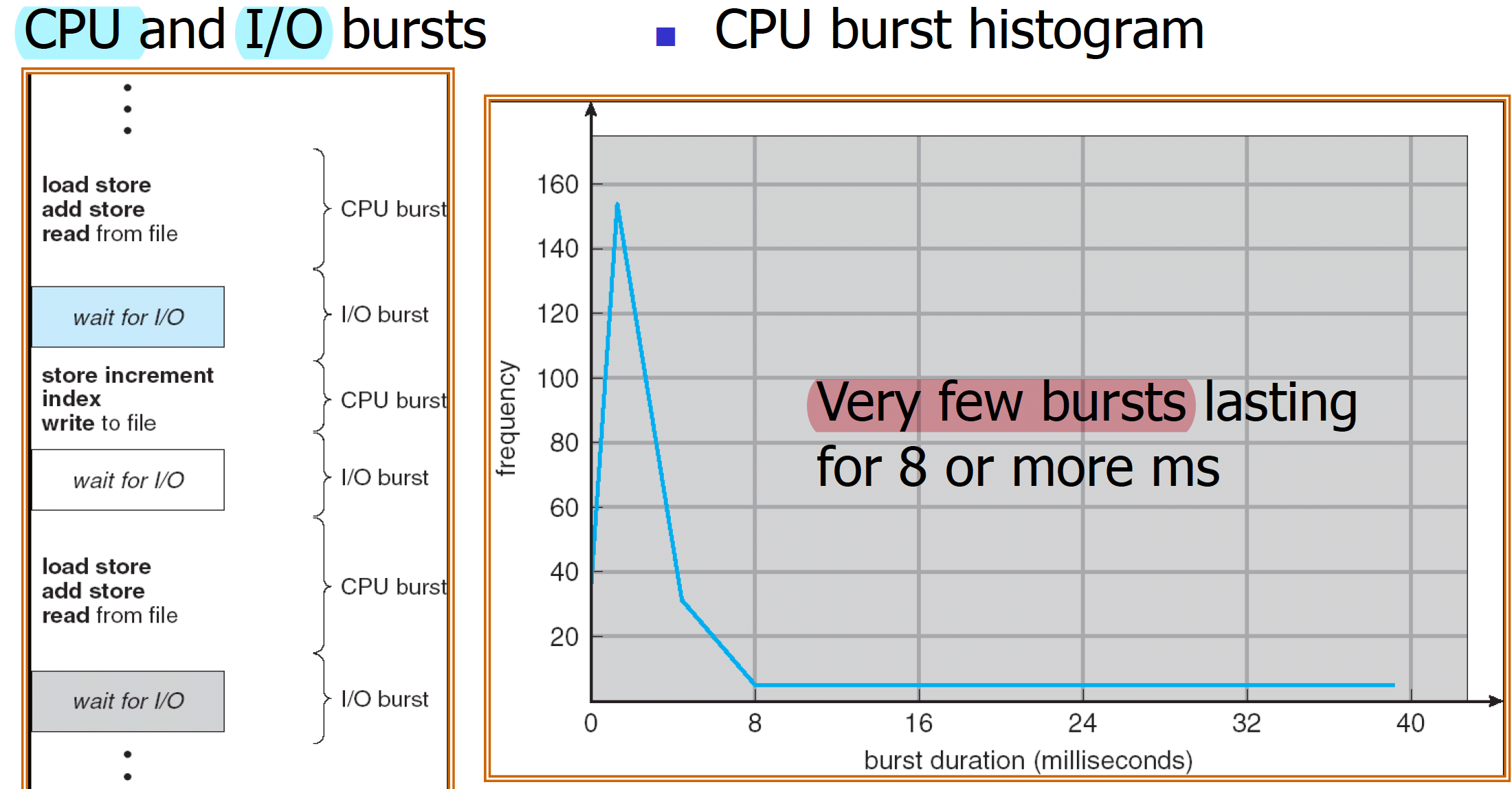CPU Scheduling
大约 3 分钟
CPU Scheduling
Scheduling
An operating system executes a variety of programs for users.
When a program is executed, it becomes a process, i.e. a process is a program in execution.
In an OS, there are multiple processes executing at the same time.
- Some computer systems have multiple CPUs, but most smaller ones have only one CPU.
- When the number of processes is more than number of CPUs, each CPU can only be allocated to a process for execution at each moment.
- Not all process can receive the CPU service at any moment.
- Process would alternate between “served by a CPU” (running) and “waiting” (ready/waiting) states. There are other possibilities to the process state.
We are concerned about the decision of which process should get the CPU when the CPU is not in used.
- This is called CPU scheduling, and the operating system component that makes this decision is called the CPU scheduler.
- The CPU scheduler needs to maximize CPU utilization in the presence of multi-programming.
Scheduling is one would like to serve the CPU bursts effectively.
对CPU和I/O突发事件的仔细观察以及通过CPU突发事件直方图的分布表明了CPU调度的真正需要。

Scheduling Algorithms
- First Come First Serve (FCFS)
- Shortest Job First (SJF)
- Shortest Remaining Time (SRT)
- Priority (PR)
- Round Robin (RR)
- Multi-Level Queue
- Multi-Level Feedback Queue
Scheduling Consideration
- CPU utilization
- 用于实际工作的CPU时间百分比(非空闲)
- Want high CPU utilization.
- Throughput
- Number of processes completing execution per time unit.
- Want high throughput.
- Turnaround time
- Amount of time to complete process execution since arrival.
- Want short turnaround time.
- Waiting time
- Amount of time a process spends waiting in ready queue.
- Want short waiting time.
- Response time
- Amount of time from the moment a request was submitted until the first response is produced (may not be output).
- Want short response time.